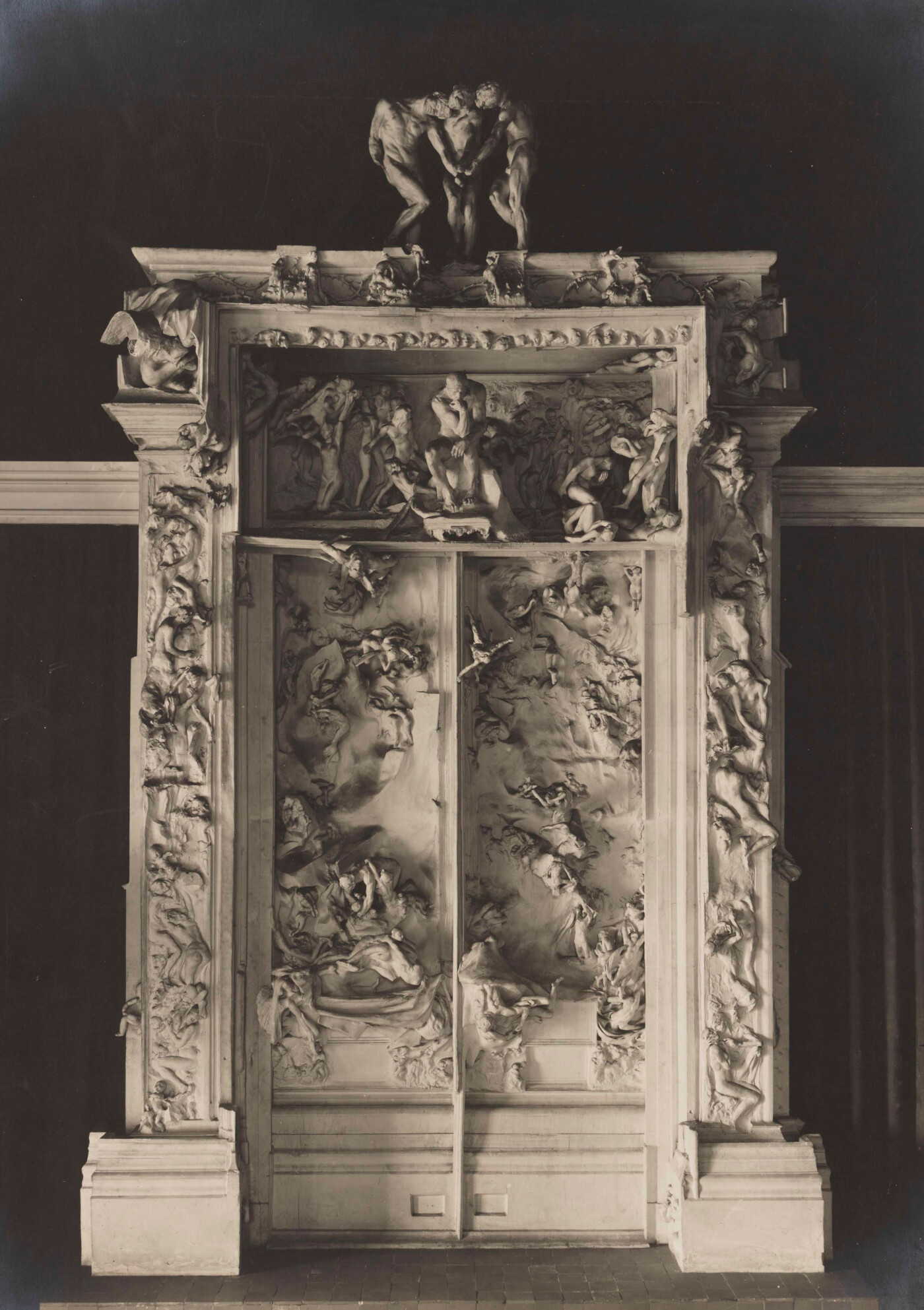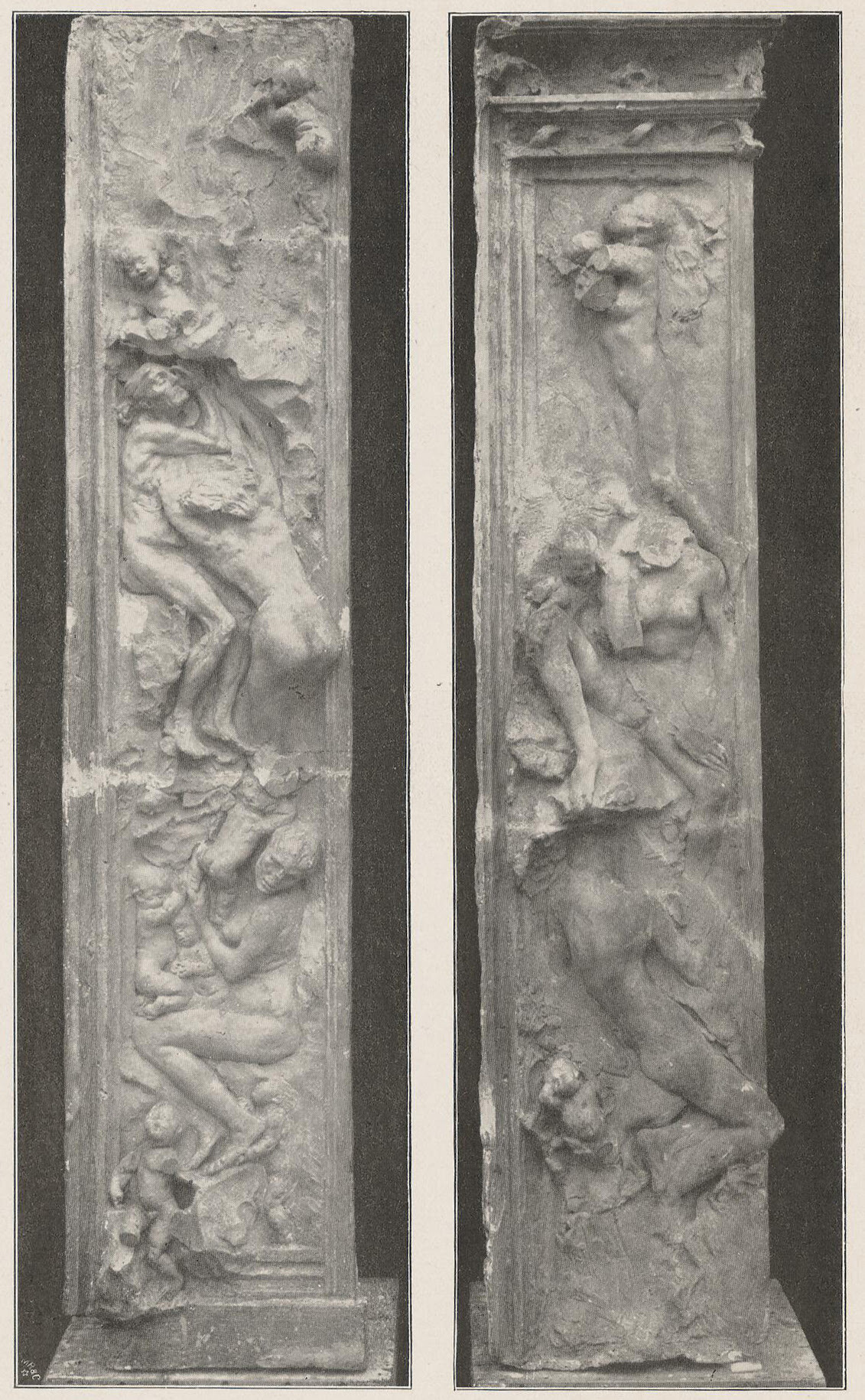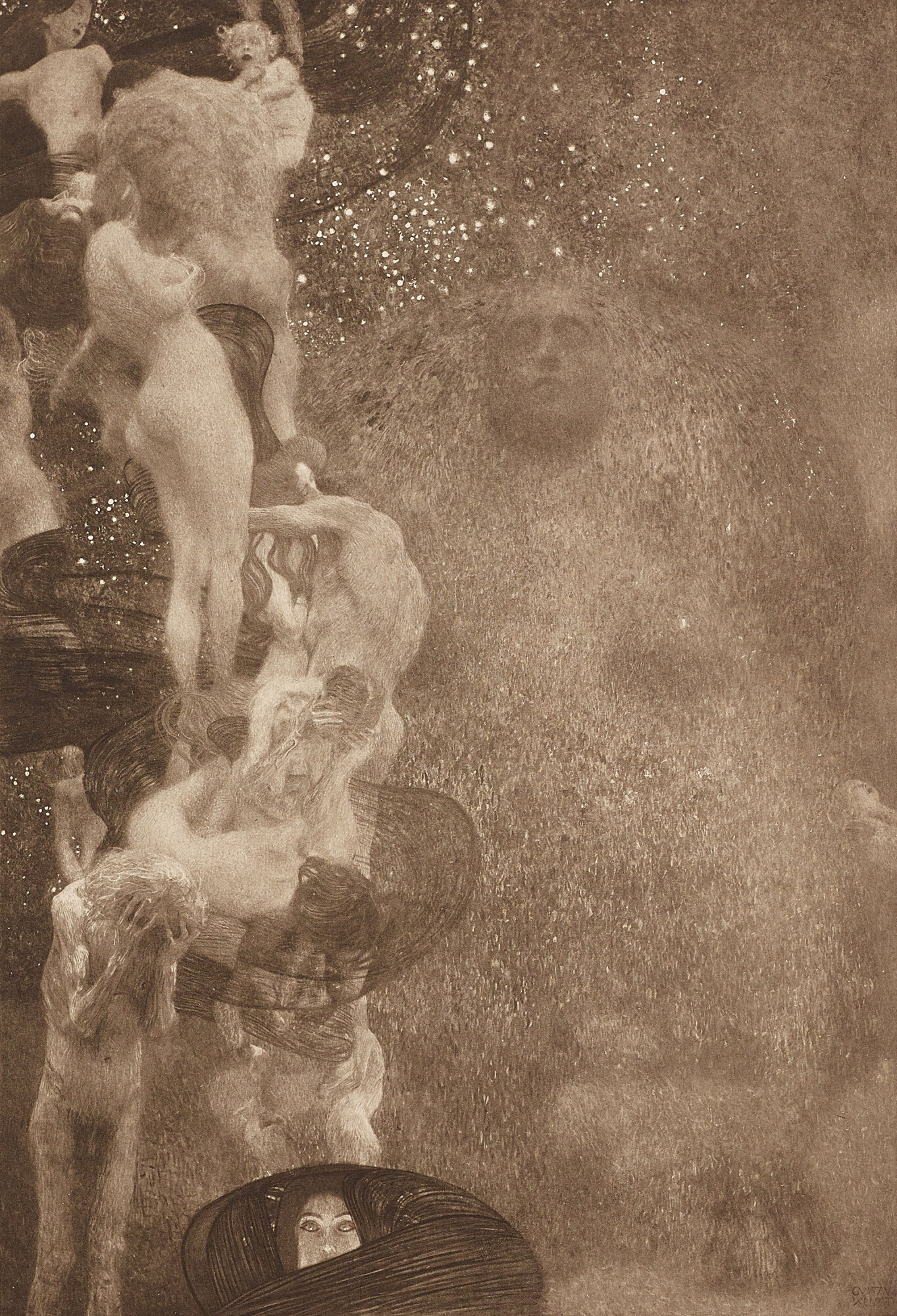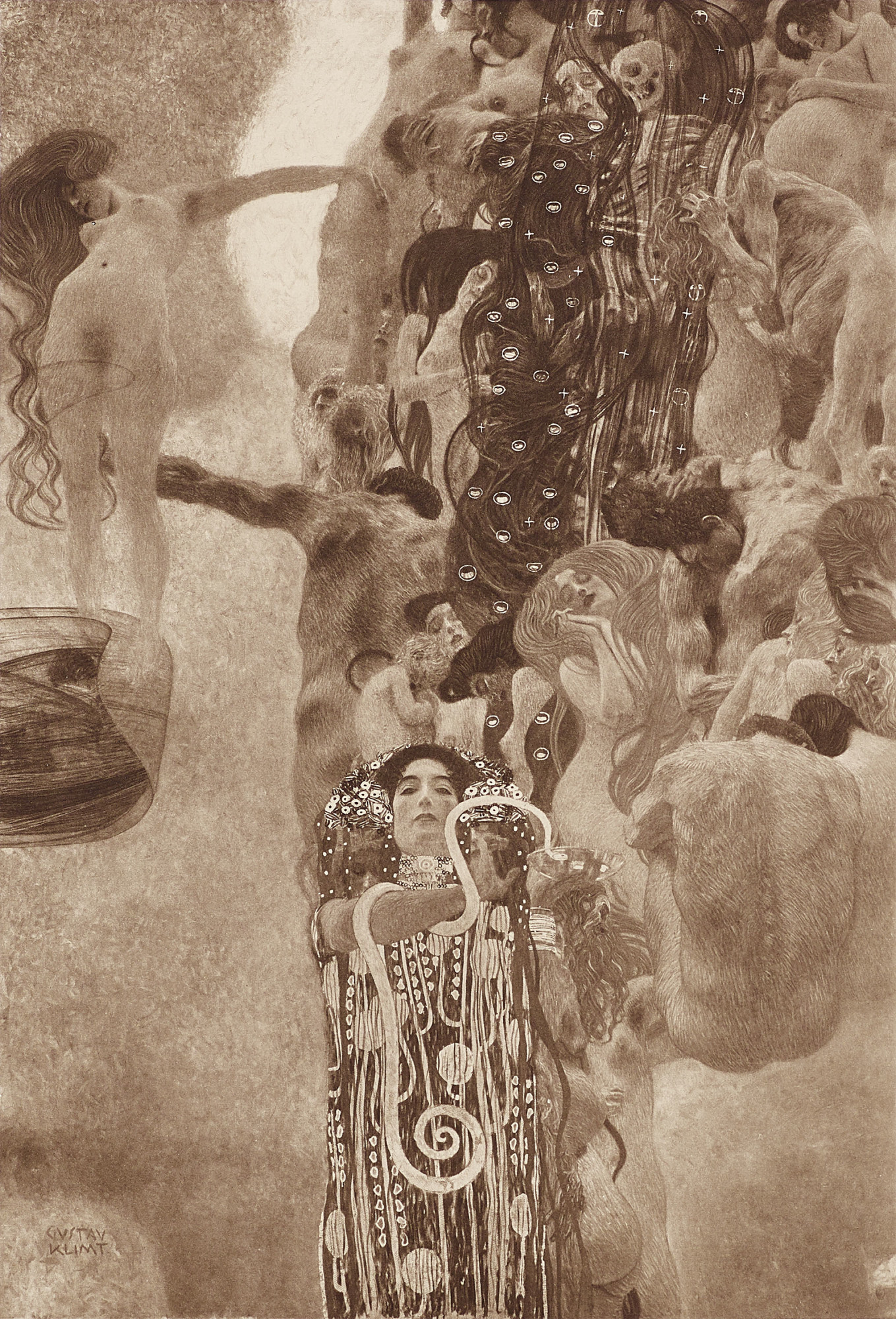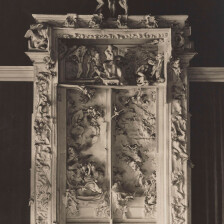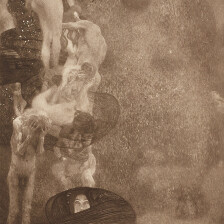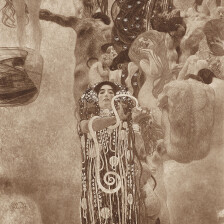Auguste Rodin
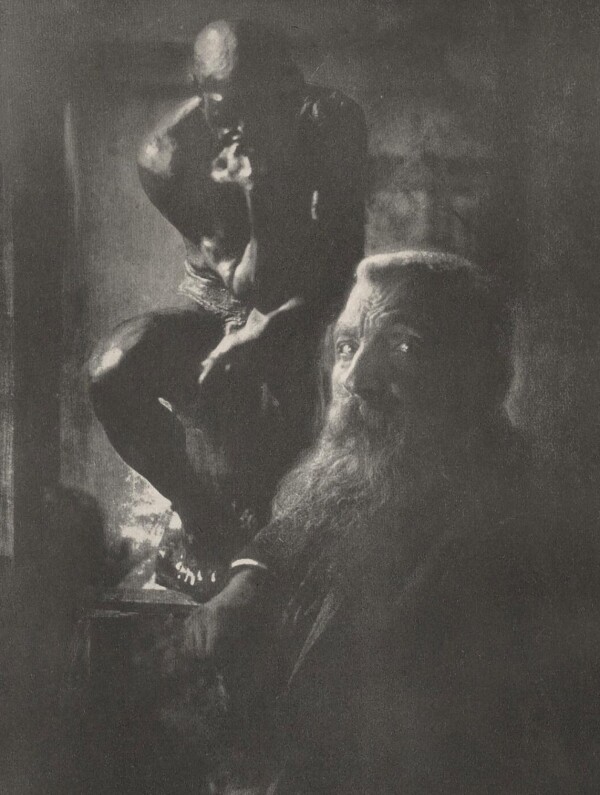
Auguste Rodin in front of his sculpture of the Thinkers, in: Otto Grautoff: Künstler-Monografien, Band 93, Bielefeld - Leipzig 1911.
© Heidelberg University Library
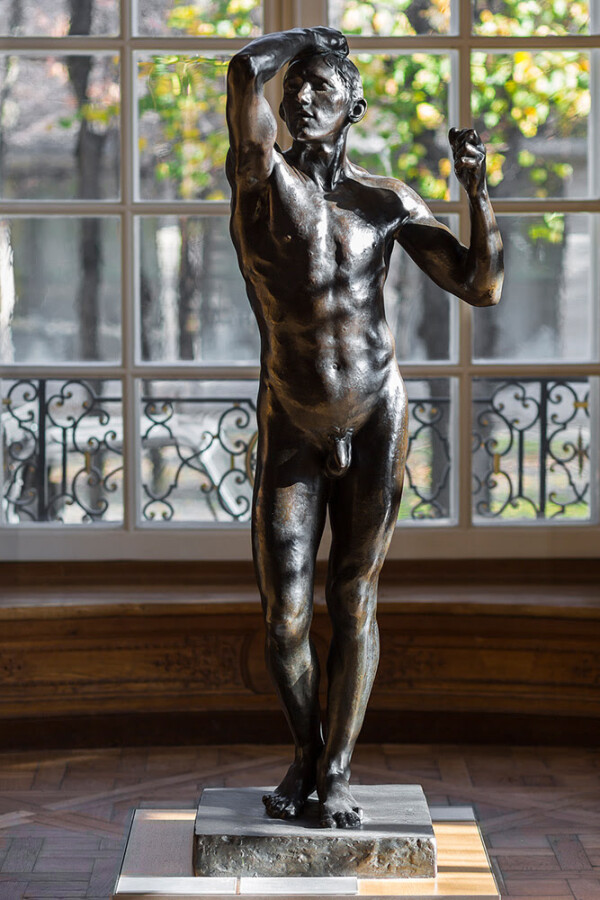
Auguste Rodin: L'Age d'Airen
© Agence photographique du musée Rodin - Jérome Manoukian
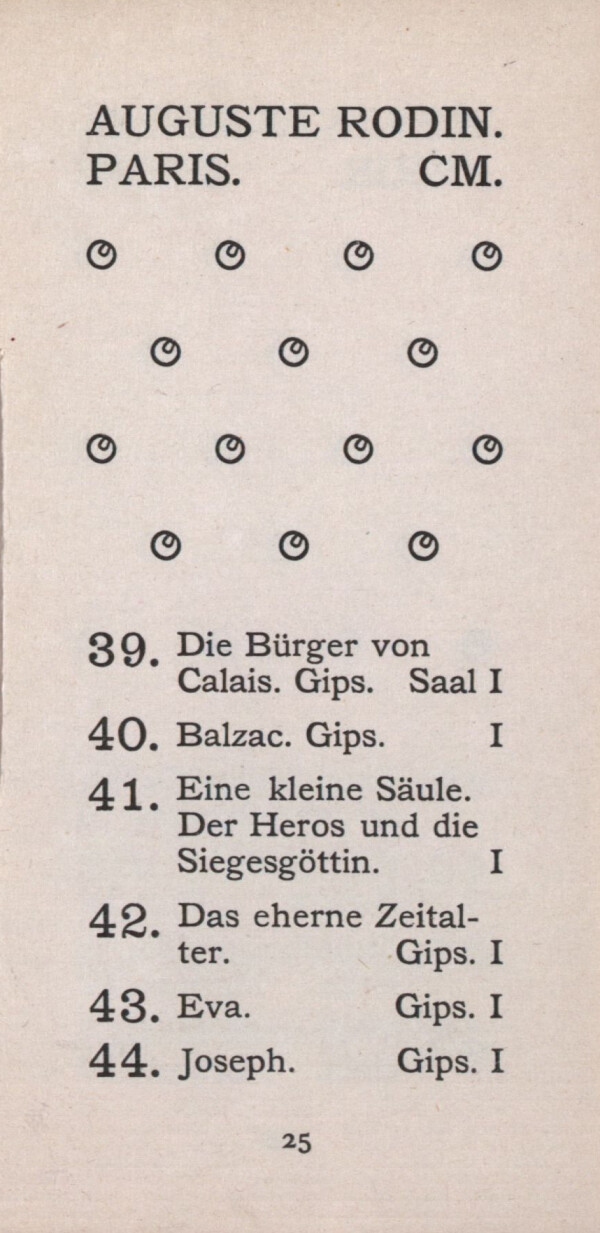
Rodin's participation in the 9th Secession exhibition, in: Vereinigung bildender Künstler Österreichs Secession (Hg.): Katalog der IX. Kunst-Ausstellung der Vereinigung bildender Künstler Österreichs Secession, Ausst.-Kat., Secession (Vienna), 00.01.1901, Vienna 1901.
© Library of the Belvedere, Vienna
The sculptor Auguste Rodin gained worldwide recognition through his work. A corresponding member of the Vienna Secession, he frequently took part in the artist association’s exhibitions. Visiting Vienna in 1902, he met Gustav Klimt, his junior by twenty years, in person, having lastingly influenced the latter with his art. Both artists were pioneers of their age and key figures in fin-de-siècle art.
Francois-Auguste-René Rodin was born in Paris on 12 November 1840. The family lived in humble circumstances. From 1854 to 1859, Rodin was a student at the École Impérial Spécial de Dessin et de Mathématiques. In 1857 he successfully applied at the École des Beaux-Arts, which was also referred to as “Grande École.” Starting in 1858, he produced decorative sculptures for a number of arts and crafts studios to earn his living. Rodin’s earliest surviving sculpture dates from 1860, a bust of his father, Jean-Baptiste Rodin (1860, Musée Rodin, Paris).
Rodin Becoming a Renowned Sculptor
After a study tour to Florence and Rome in 1875/76, Rodin began his in-depth exploration of Michelangelo’s work. His sculpture Le Vaincu [The Vanquished] was exhibited under the title of L’Age d’Airain [The Age of Bronze] (1877, Musée Rodin, Paris) at the Salon de Paris in 1877, causing a scandal in the Paris art world. Rodin was accused of having molded the statue directly on his model. The sculptor eventually managed to prove that the opposite was true, so that this scandal helped him gain recognition on the Parisian art scene
In 1880 the government entrusted the emerging sculptor to conceive a portal for the Musée des Arts décoratifs. Varying motifs from Dante’s Divina Commedia, he created one of his masterpieces: La Porte de l’Enfer [The Gates of Hell] (1880–1917, Musée Rodin, Paris), which ensured his breakthrough to success.
Rodin in Vienna
In the meantime, Rodin had also attracted attention outside France. Especially the Union of Austrian Artists – Secession, which sought to present Viennese art in an increasingly international context, took a keen interest in the innovative sculptor. Carl Moll, Josef Engelhart, and Wilhelm Bernatzik, who regularly traveled to the French capital, seized the opportunity to familiarize themselves with the sculptor’s works in situ. Shortly after the foundation of the Vienna Secession in 1897, Rodin was appointed corresponding member. As early as the following year, he took part in the Secession’s “I. Kunst-Ausstellung der Vereinigung bildender Künstler Österreichs” [“1st Art Exhibition of the Union of Austrian Artists”] in 1898 presenting models for his Monument à Victor Hugo (1886, Petit Palais, Musée des Beaux-Arts de la Ville de Paris) and the bust of the sculptor Aimé-Jules Dalou (1883, Museum für Kunst und Gewerbe Hamburg), the latter of which the Secessionists wished to acquire for the Modern Gallery. Works by Rodin were also on view in the Secession’s 4th (1899) and 7th (1900) exhibitions. His contribution to the Secession’s 9th exhibition in 1901, which was dedicated to its deceased member Giovanni Segantini and other international artists from abroad, was particularly remarkable: fourteen sculptures and eight works on paper by Rodin were on display. The Viennese public received the modern sculptor’s work quite favorably. In 1898, Hevesi referred to him as “[a] kind of Parisian Michelangelo [...],” while another reviewer wrote:
“The name of the third saint of devout modernism on display for adoration is August [!] Rodin.”
Rodin, who had never attended these exhibitions himself, did not appear in Vienna in person for the first time before 1902. Following a show of his collected works in Prague, Rodin stopped over in Vienna on his journey home to stay for a few days. Berta Zuckerkandl, whose sister Sophie Clemenceau lived in Paris, had contacted Rodin on behalf of the artists of the Secession. She honored the sculptor by hosting an afternoon reception at the Sachergarten, where Gustav Klimt was most likely also present.
During his visit of the Secession’s 14th exhibition, the so-called “Beethoven Exhibition,” which took place at the time, Rodin met Klimt, who had made a monumental contribution to the show with his Beethoven Frieze (1901, Österreichische Galerie Belvedere, Vienna), on 5 June 1902. In 1970, Berta Zuckerkandl, remembering their encounter, wrote:
“And when he stood in the Klimt room in front of the latter’s Beethoven fresco, he fell silent once again – but it was the silence of deep emotion. He took Klimt’s hands to hold them in his: ‘What an artist you are! You know your craft!’”
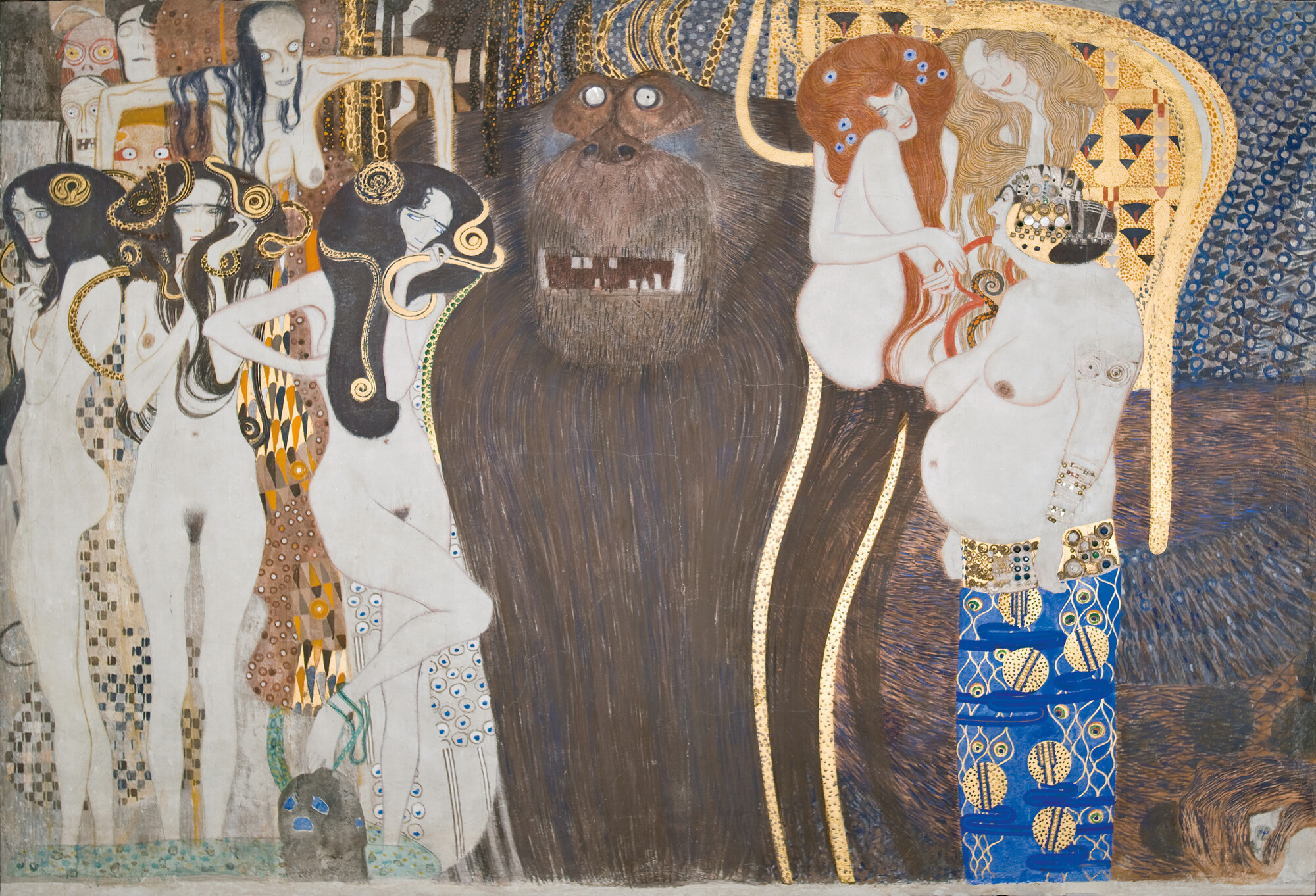
Gustav Klimt: The Beethoven Frieze (The Hostile Forces), 1901/02, Österreichische Galerie Belvedere
© Belvedere, Vienna
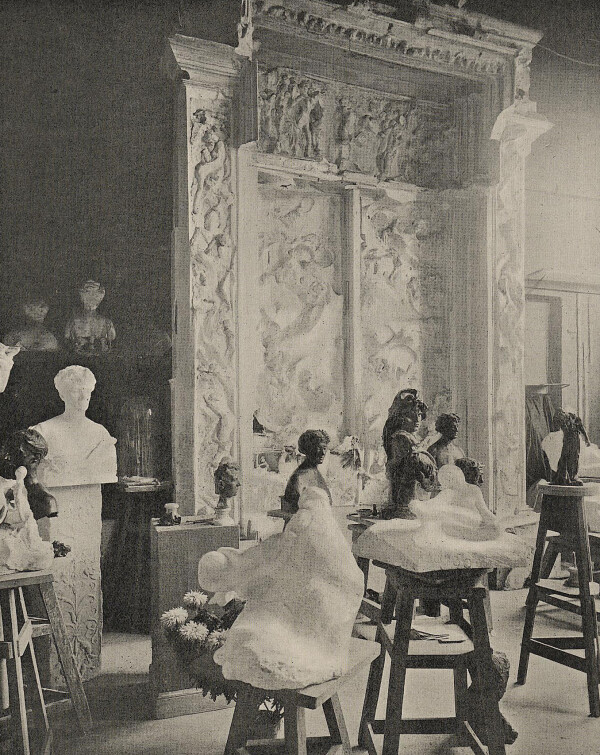
Rodin's studio with the Gates of Hell, in: The International Studio. An Illustrated Magazine of Fine and Applied Art, Band 33 (1907/08).
© Heidelberg University Library
However, due to numerous discrepancies in this report, which came with a delay of seventy years, the validity of these memories remains questionable.
In the context of Rodin’s participation in the Secession’s 16th exhibition in 1903, which was devoted to the movement of Impressionism, the sculptor wrote a contribution about the goals of sculpture for Ver Sacrum. He underscored the necessity to work from nature and follow one’s sensations to perceive a “sens de vie.”
Klimt, who must already have known Rodin’s works before the modernist sculptor’s visit to Vienna from the Secession’s numerous exhibitions, appears to have been deeply impressed by him. Time and again, the creative principles on which Rodin’s sculptures were based influenced Klimt’s painting. For example, in the crowded figural compositions of the Faculty Paintings of Philosophy (1900–1907, destroyed by fire at Immendorf Castle in 1945) and Medicine (1900–1907, destroyed by fire at Immendorf Castle in 1945), Rodin’s Gates of Hell played a crucial and influential role. And such themes as illness, old age, and sexuality appear to have made their way into Klimt’s oeuvre via Rodin’s sculptures.
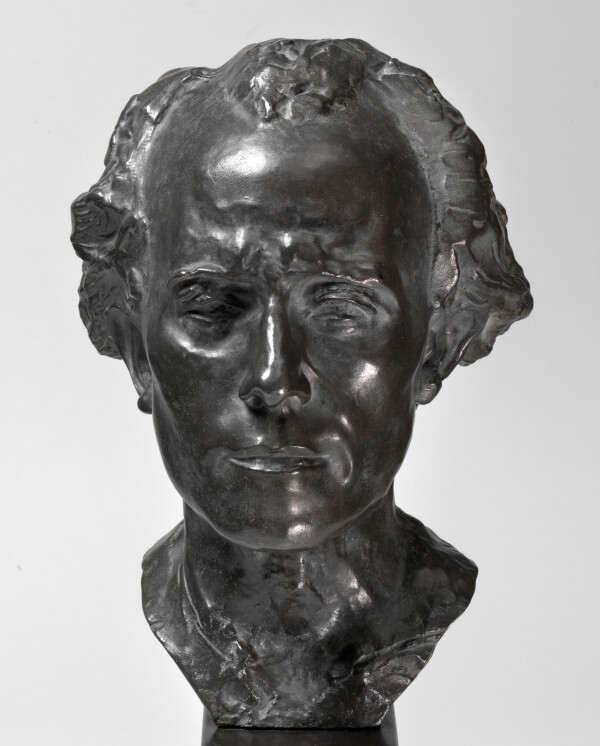
Auguste Rodin: Bust of Gustav Mahler, 1909, Wien Museum
© Wien Museum
Vienna was to remain an important base for Auguste Rodin throughout his life. In 1903, the Austrian poet Rainer Maria Rilke, a close friend of Rodin’s, wrote the artist’s biography. It was also Rilke who, in 1908, initiated a presentation of works on paper by Rodin, who was otherwise primarily known as a sculptor, at the Kunstsalon Heller. In 1909, Carl Moll commissioned a bronze bust of Gustav Mahler (1909, Kunsthalle Mannheim) from the artist, which was presented three years later in an exhibition of the Vienna Hagenbund. From 1912 on, international exhibitions in Tokyo and London followed, as well as the inauguration of a special Rodin Room at the Metropolitan Museum of Art in New York.
Starting in 1914, Rodin’s health deteriorated considerably. In 1916, after two strokes, the artist donated all of his works to the French state, which subsequently installed the Musée Rodin. Auguste Rodin died on 17 November 1917 at the age of 84 years. His statue Le Penseur [The Thinker] (1902, Musée Rodin, Paris) was placed above his tomb.
Literature and sources
- Mona Horncastle, Alfred Weidinger: Gustav Klimt. Die Biografie, Vienna 2018.
- Rodin in Wien. Art in Words. artinwords.de/rodin-und-wien/ (01/10/2022).
- Vereinigung bildender Künstler Österreichs Secession (Hg.): Katalog der I. Kunstausstellung der Vereinigung bildender Künstler Österreichs, Ausst.-Kat., Flower rooms of the k. k. Gartenbaugesellschaft (Vienna), 26.03.1898–20.06.1898, Vienna 1898.
- Vereinigung bildender Künstler Österreichs Secession (Hg.): Katalog der IX. Kunst-Ausstellung der Vereinigung bildender Künstler Österreichs Secession, Ausst.-Kat., Secession (Vienna), 00.01.1901, Vienna 1901.
- Ludwig Hevesi: Moderne Plastik, in: Acht Jahre Sezession (März 1897–Juni 1905). Kritik – Polemik – Chronik, Vienna 1906, S. 17.
- Auguste Rodin: Rodin, Meunier, Bartholomé und Debois über die Ziele der Plastik, in: Vereinigung bildender KünstlerInnen Wiener Secession (Hg.): Ver Sacrum. Mitteilungen der Vereinigung bildender Künstler Österreichs, 6. Jg., Heft 6 (1903), S. 140.
- R. L.: Ein Gespräch mit Rodin, in: Neue Freie Presse, 06.06.1902.
- Agnes Husslein-Arco, Stephan Koja (Hg.): Rodin und Wien, Ausst.-Kat., Lower Belvedere (Vienna), 01.10.2010–06.02.2011, Vienna 2010.
- Max Hollein, Tobias G. Natter (Hg.): Klimt & Rodin. An Artistic Encounter, Ausst.-Kat., San Francisco, 14.10.2017–28.01.2018, San Francisco 2017.


